Organizational Self-Assessment of Patient- and Family-Centered Care
VerifiedAdded on 2023/02/03
|5
|1005
|46
Homework Assignment
AI Summary
This assignment presents a comprehensive self-assessment tool designed to evaluate the implementation of patient- and family-centered care (PFCC) within a hospital setting. The tool assesses various elements across multiple domains, including leadership/operations, information/education, diversity & disparities, charting and documentation, and care support. Each element is evaluated based on a scale from low to high implementation, with examples of current practices involving patient and family partnerships. The assessment covers aspects such as clear commitment statements, patient and family inclusion in policy development, access to resources, interpreter services, charting access, and family involvement in care planning and decision-making. The tool aims to provide a structured approach to identify strengths and areas for improvement in fostering a patient- and family-centered environment, ultimately enhancing the quality of care and patient outcomes. The assessment emphasizes the importance of patient and family engagement, communication, and collaboration throughout the healthcare process. The provided assessment tool is designed to help healthcare organizations evaluate and improve their patient and family centered care practices.
1 out of 5
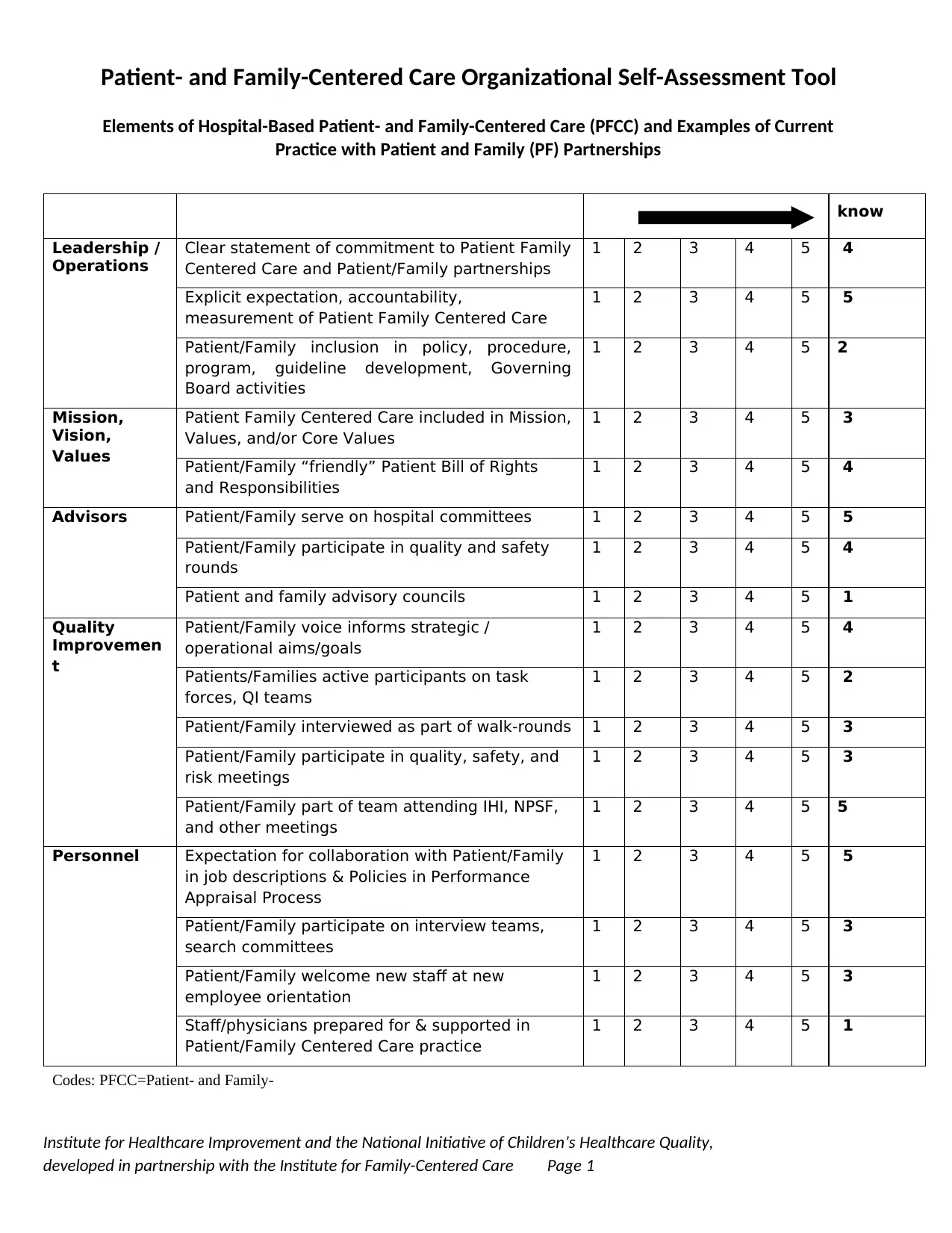
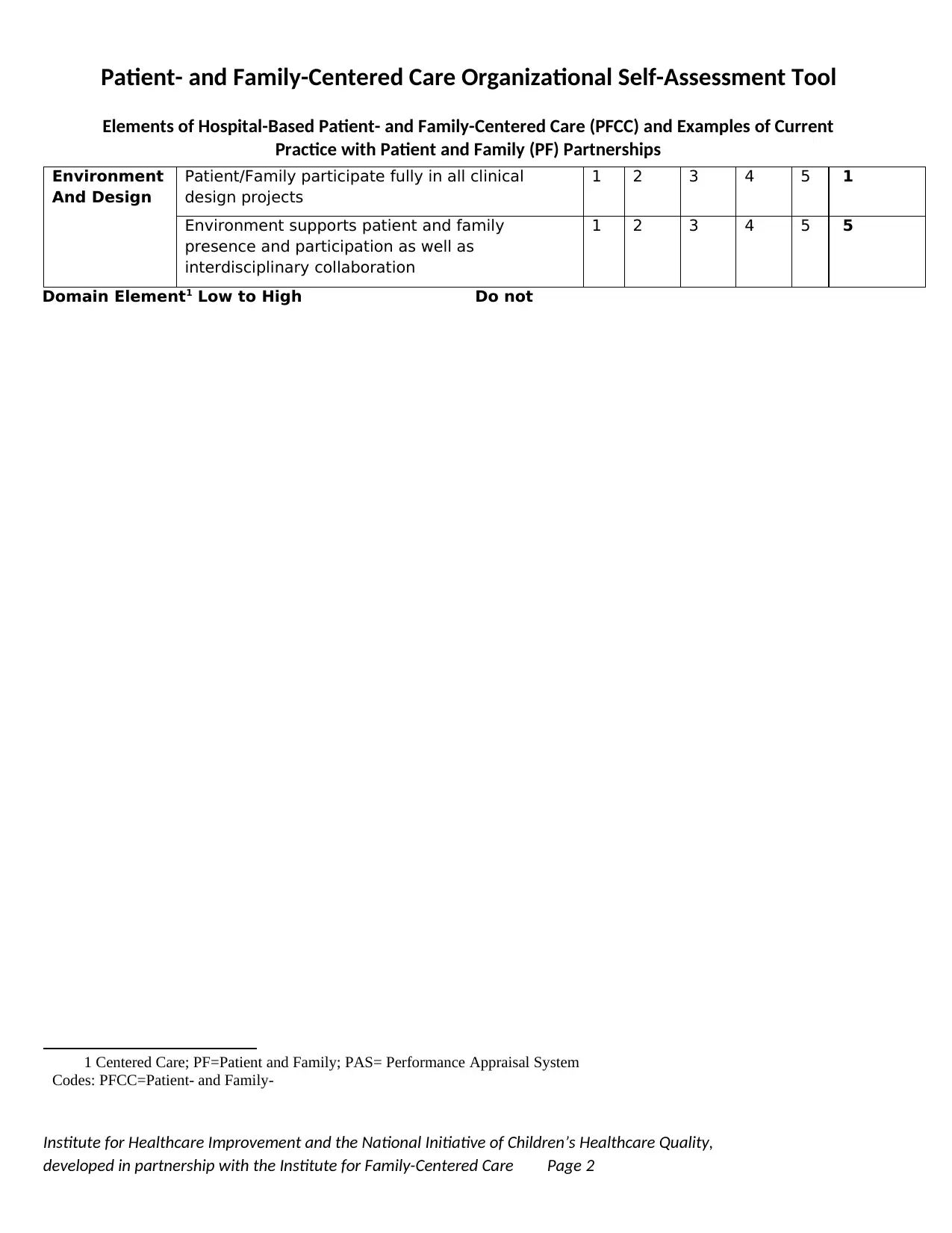
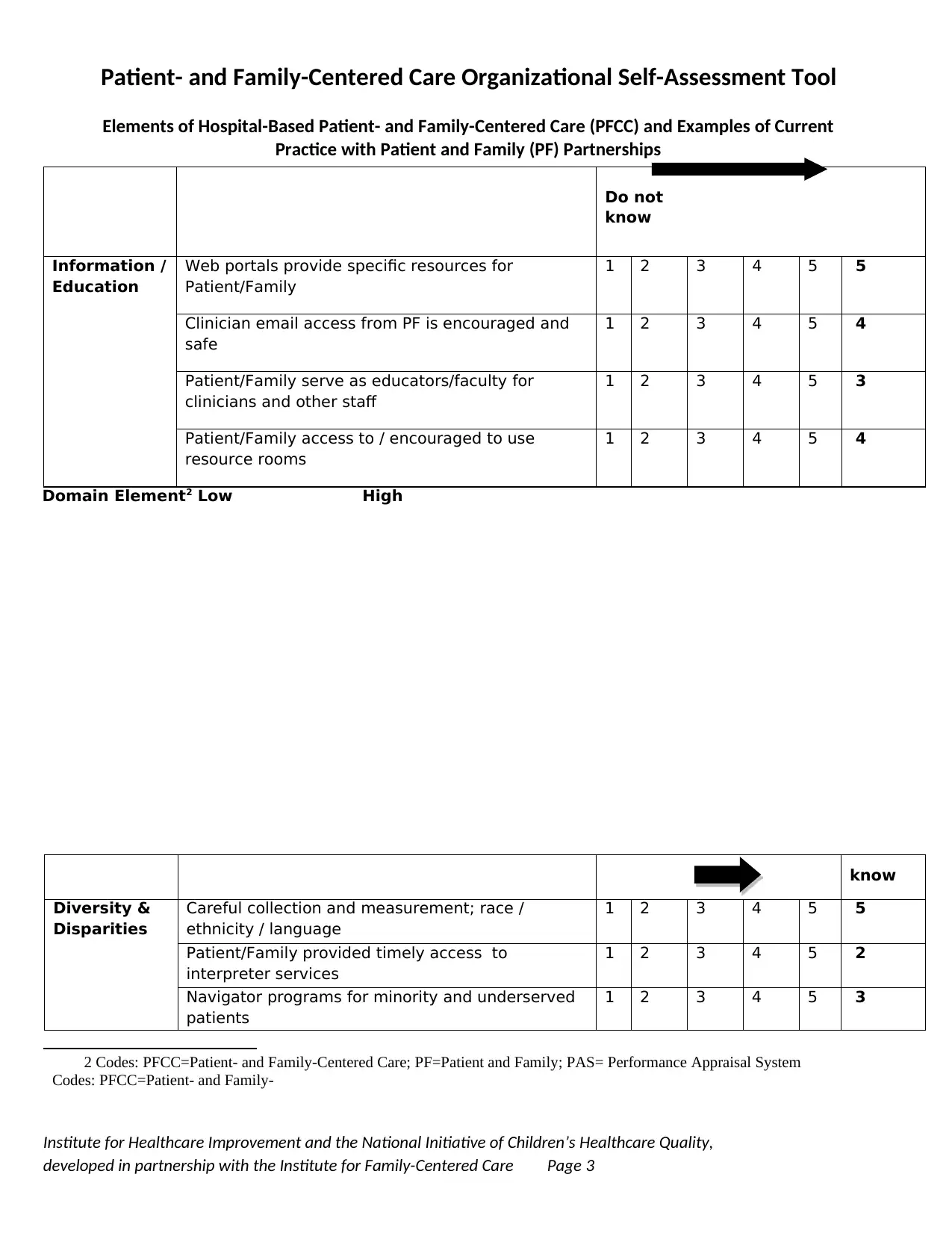

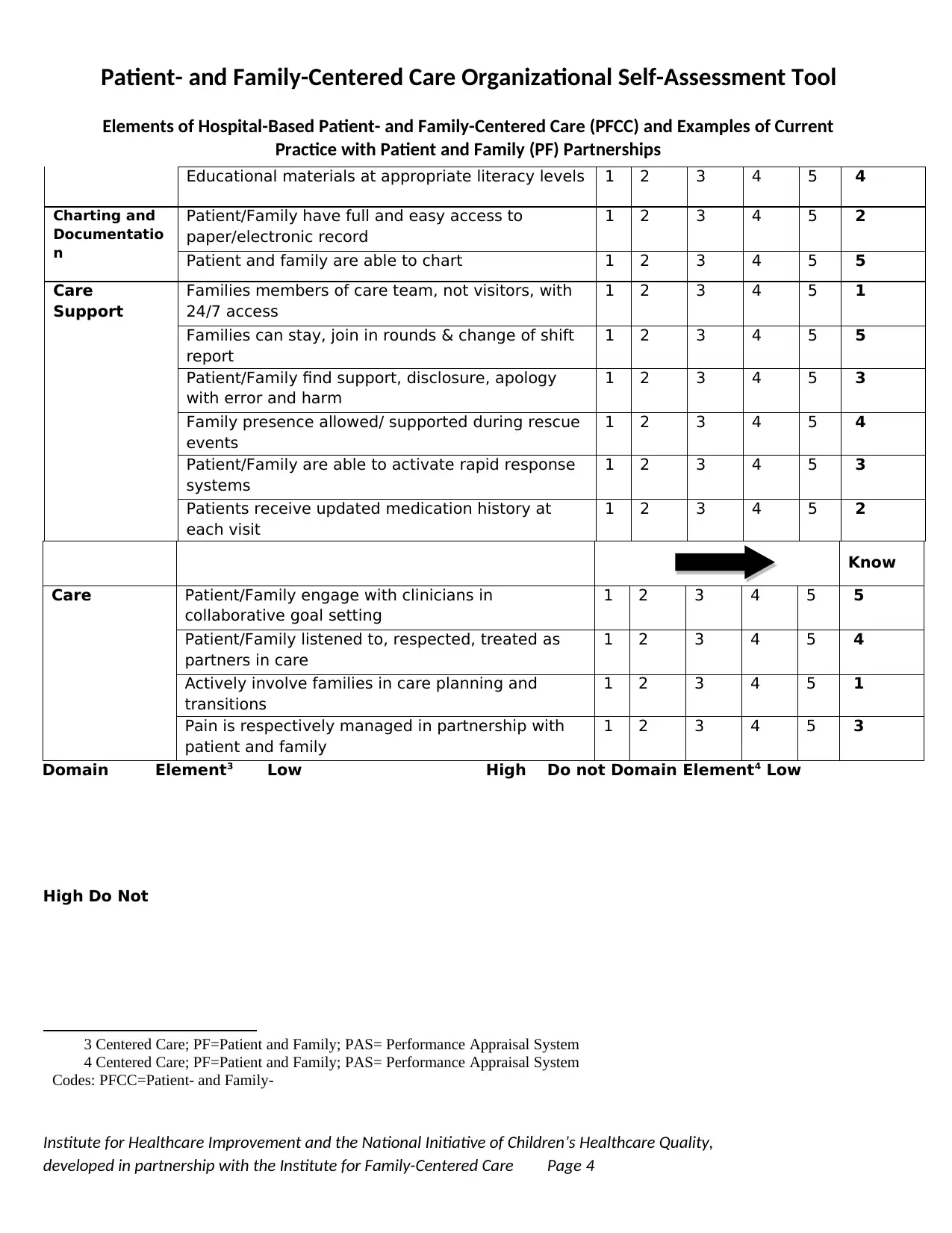
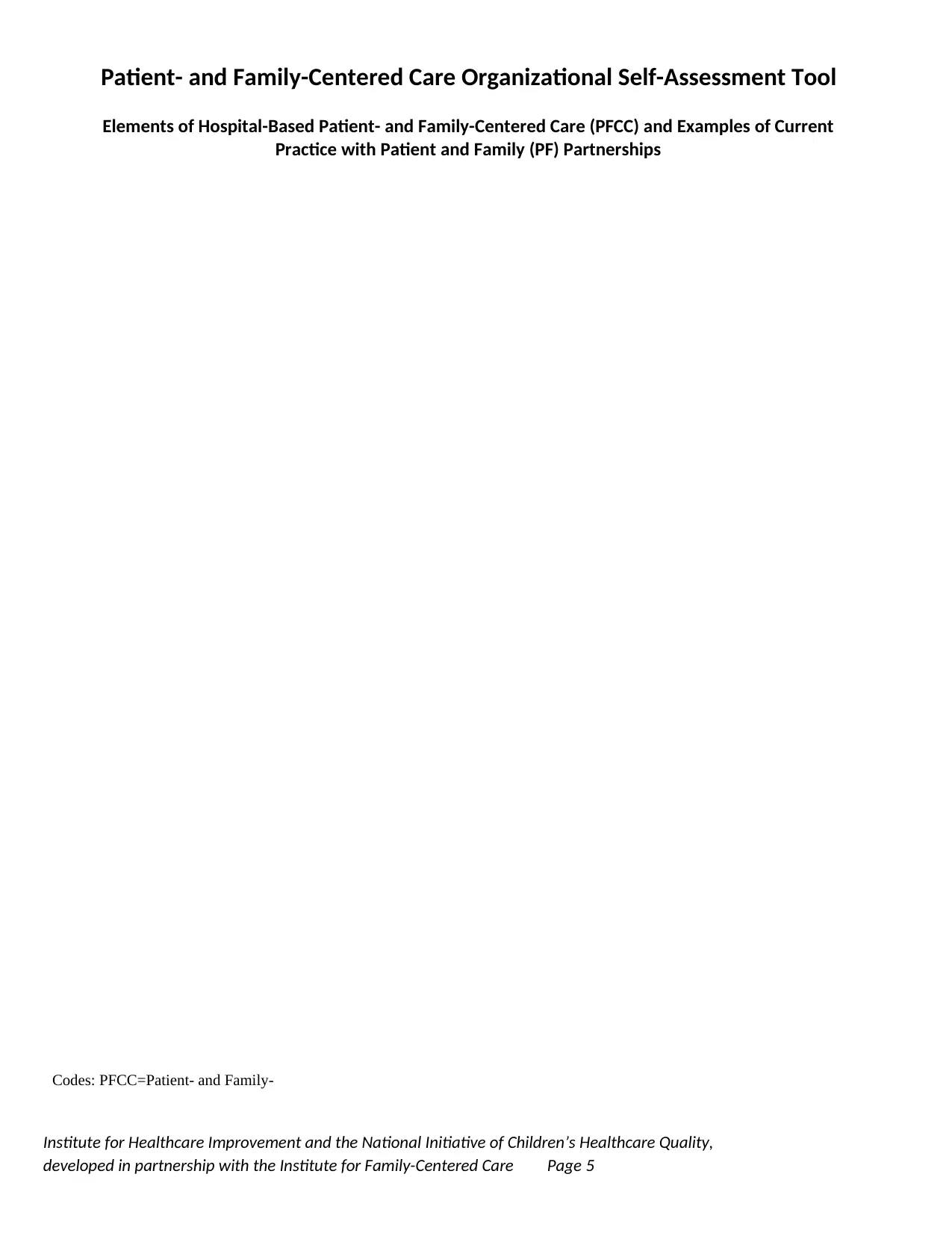





![[object Object]](/_next/static/media/star-bottom.7253800d.svg)